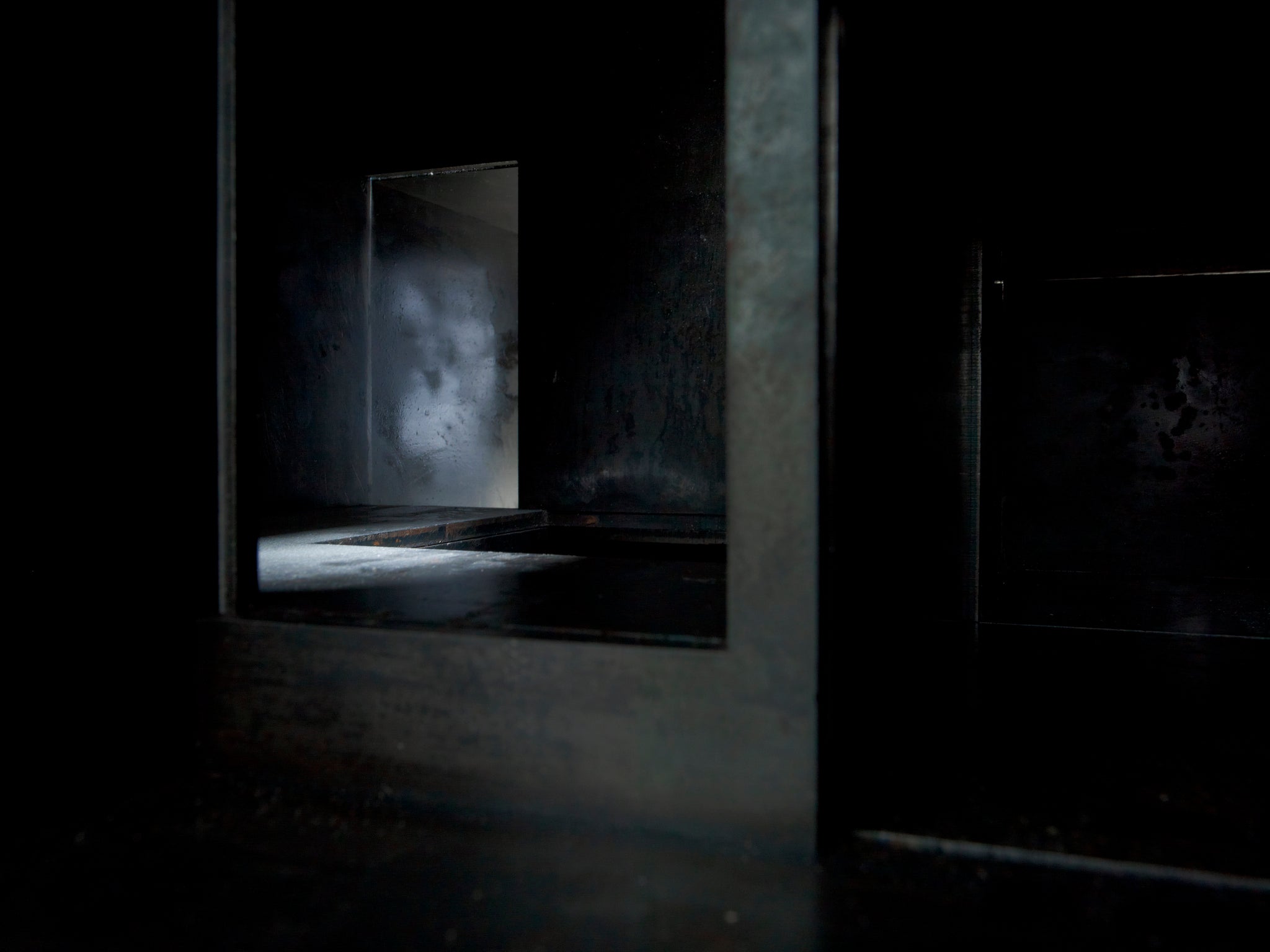Model by Antony Gormley, White Cube Bermondsey, London

A strew of very spare and rather robotic looking body forms, constructed from iron blocks, make their presences felt, tentatively, up the main corridor of White Cube, Bermondsey, and in a gallery off to the right.
No, the ones off to the right are more blockish, more pugnaciously substantial. One entire gallery is devoted to maquettes and drawings of various projects, including one for Model, which is on display in the large South Gallery.
Model, created from large sheets of Corten steel, is what we are here to see. It is a gallery-engulfing, pared down body of sorts, laid out on the ground. It is also a building, a series of conjoined stacked boxes.
We can walk through it, entering by the bottom of what is described as its left foot (there is no right foot). Gormley regards this piece as the culmination of decades of work, some kind of summary of all that he has been trying to say and do about the relationship between sculpture, architecture and the human form.
He does not want us to regard it as a spectacle because that word suggests a superficial response. As we enter, we think of Miroslaw Balka's giant ship's container in the Turbine Hall of Tate Modern or of Richard Serra's giant Corten steel sculptures, which were also immersive, enveloping, walk-through experiences.
There is nothing new about the idea of a building roughly mimicking the shape of the human body, of course. Is that not what Christian churches have done down the centuries, with the columnar body of the nave giving onto spread-arm-like transepts and dome-headed ambulatories?
That sounds a little crude. Gormley's walk-through experience is not so predictable as that. We walk, tentatively, down maze-like corridors, making sudden turns to the left or right. From time to time, light splashes down from the gallery's ceiling above our heads.
The walk is interesting, but never really arresting. It lacks the entrapping unpredictability of Serra, or that feeling we had in Balka's container that we were being cast adrift, and that we would not be able to find our way home. We experience a slight frisson of something when our feet boom on the floor of Corten steel.
Occasionally, when the ceiling lowers, we nearly crack our heads. We nearly experience pain. But not quite. We think of the pyramids, of tombs in lightless spaces. We have entered this space hoping for a visceral response of some kind, but it never quite happens.
Subscribe to Independent Premium to bookmark this article
Want to bookmark your favourite articles and stories to read or reference later? Start your Independent Premium subscription today.

Join our commenting forum
Join thought-provoking conversations, follow other Independent readers and see their replies